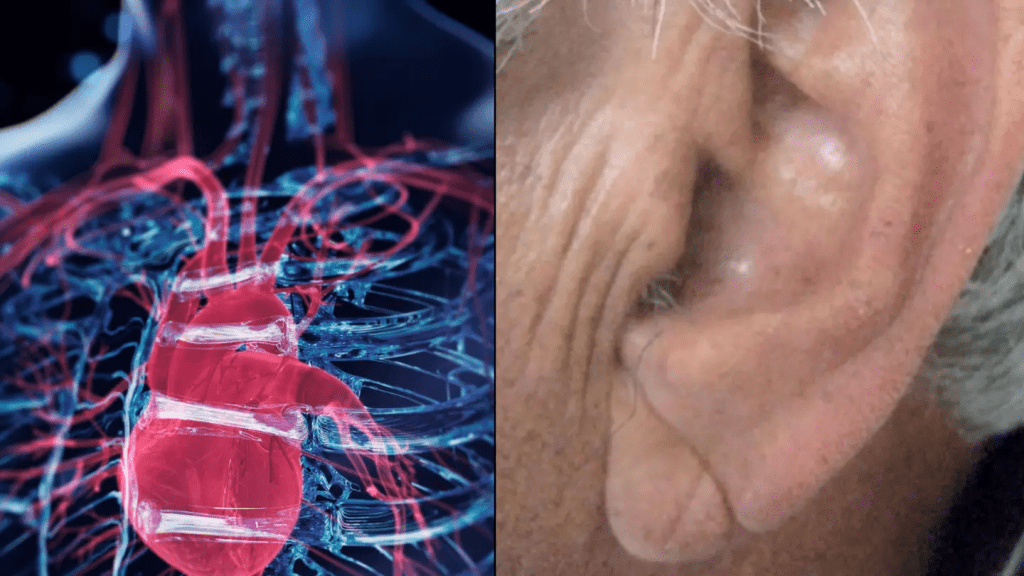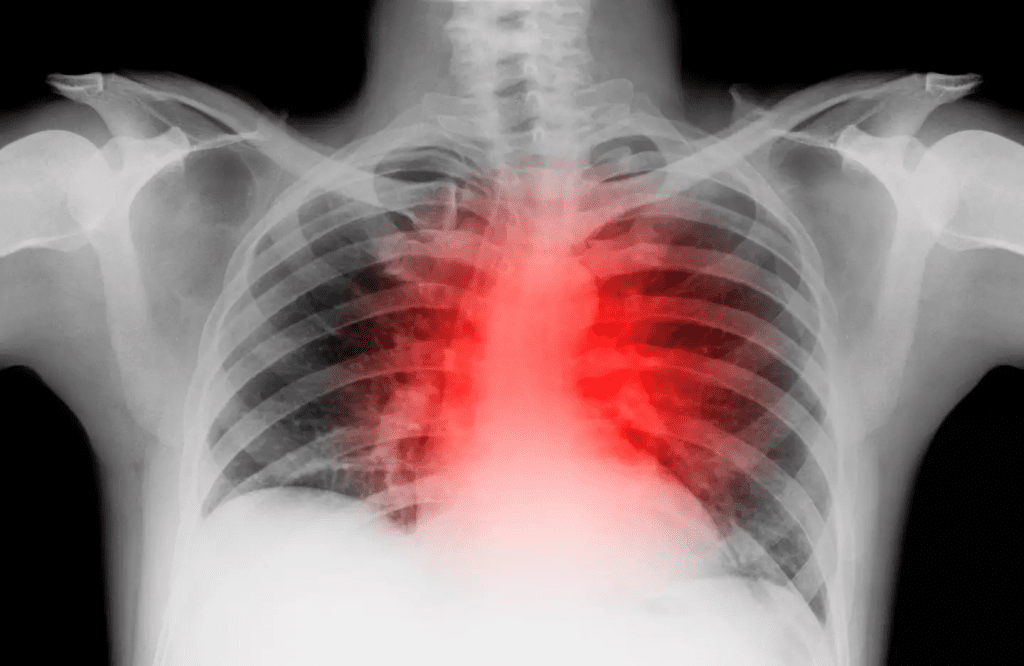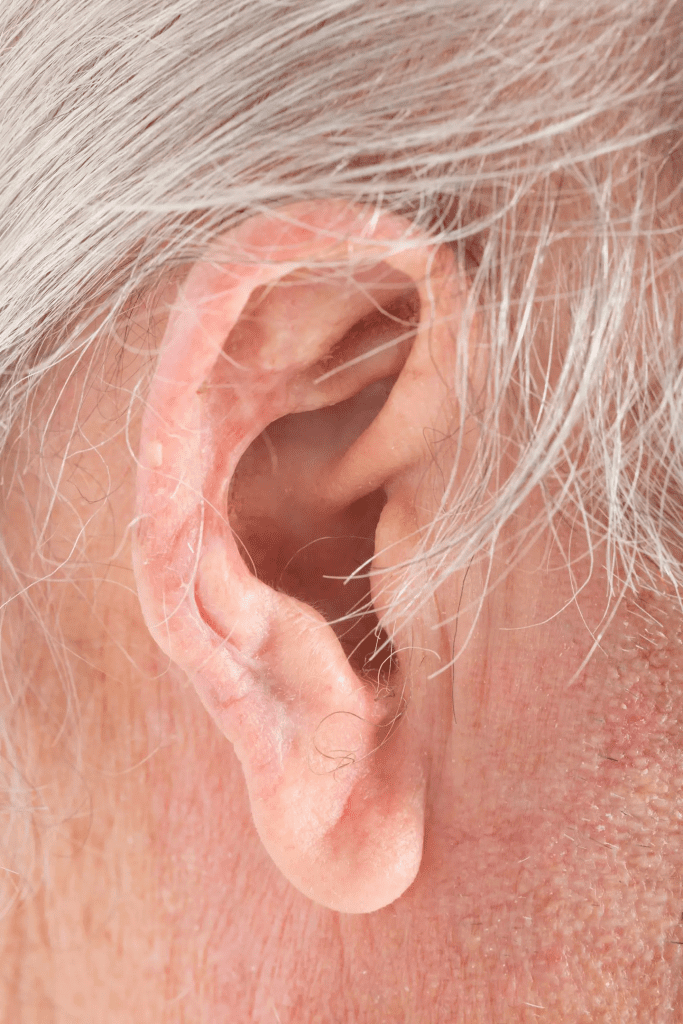We often overlook the small changes in our bodies, but sometimes these subtle signs can be important indicators of underlying health conditions. One such sign is a distinct mark on the earlobe, known as ‘Frank’s sign,’ which might suggest poor cardiovascular health. Surprising as it may sound, this visible crease could be a warning of potential heart issues. In this article, we’ll explore what this mark means, its historical discovery, and the research linking it to heart disease.

What Is Frank’s Sign? Understanding the Earlobe Crease
Frank’s sign, or diagonal earlobe crease (DELC), is a diagonal line that appears across the earlobe, extending from the tragus to the edge of the earlobe. First identified in 1973 by Dr. Sanders T. Frank, this crease has since been linked to potential cardiovascular problems. But what exactly is it, and why does it matter?
The Appearance of Frank’s Sign
The crease typically appears as a single, prominent line running diagonally across the earlobe. It is believed to result from the loss of elastic fibers in the skin, which can be associated with aging. However, not everyone with the mark is elderly, nor does every older person have it. What makes this mark noteworthy is its possible link to cardiovascular diseases (CVD), such as heart disease and atrial fibrillation (AFib).
The Connection Between Frank’s Sign and Heart Disease
While the idea of an earlobe crease indicating heart health might seem far-fetched, studies have shown a correlation between DELC and heart problems. It’s not yet fully understood why this connection exists, but the evidence suggests it’s worth paying attention to.
Research Linking Frank’s Sign to Cardiovascular Health
Several studies have found that individuals with DELC are more likely to have cardiovascular issues, including coronary artery disease (CAD) and irregular heartbeats like atrial fibrillation. For example, a 2022 study discovered that 78% of 50 patients who suffered fatal heart attacks also had this distinctive mark on their earlobe. This suggests that DELC may serve as a visible predictor of heart risk.
In a more recent 2024 study, researchers concluded that DELC is “independently associated with higher cardiovascular risk,” meaning that the longer and deeper the diagonal crease, the greater the potential risk of heart disease.
Why Does Frank’s Sign Occur? Theories Behind the Earlobe Crease
The exact reason why some individuals develop Frank’s sign while others do not is still a mystery. However, researchers have proposed several theories about why this visible mark may relate to cardiovascular health.
Loss of Elasticity and Vascular Aging
One theory suggests that the appearance of DELC may be due to the loss of elastic fibers in the skin, a process that could reflect overall vascular aging. As arteries harden and lose elasticity, changes in skin tissue—like the formation of the earlobe crease—might become visible indicators of what’s happening inside the body.
A Marker of Poor Circulation?
Another theory links the crease to reduced blood flow in the small blood vessels, including those in the earlobe. Since cardiovascular diseases often impact blood circulation, the presence of the crease could be a sign of compromised vascular function.

Frank’s Sign and Atrial Fibrillation: An Important Link
Atrial fibrillation, a common heart rhythm disorder, is another condition that has been associated with DELC. Patients with both DELC and CAD are at a significantly higher risk of developing atrial fibrillation than those without the crease. A study in the Journal of Clinical Medicine even suggested that DELC could help predict major adverse cardiac events in patients with known coronary artery disease.
The study’s authors concluded that “DELC might serve as a useful visible predictor of AF in patients with CAD,” emphasizing the importance of paying attention to this physical feature during routine check-ups.
Does Having Frank’s Sign Mean You Have Heart Disease?
While the presence of an earlobe crease can be alarming, it’s important to understand that it is not a definitive diagnosis of heart disease. Many factors contribute to cardiovascular risk, and DELC is just one possible indicator.
A Piece of the Puzzle
As noted by Professor Tim Chico, a cardiovascular expert from the University of Sheffield, “Cardiovascular disease isn’t just something that affects the heart; it affects all the blood vessels around the body and all organs.” He adds that seeing DELC in a patient doesn’t change the standard advice given for reducing heart risk—such as avoiding smoking, maintaining a healthy weight, eating a balanced diet, and exercising regularly.
How to Reduce Your Cardiovascular Risk: Proactive Steps to Take
If you have noticed a diagonal crease on your earlobe, it’s wise to be proactive about your heart health. While the mark alone doesn’t confirm a heart problem, it can serve as a motivation to adopt healthier habits and monitor your cardiovascular health more closely.

1. Get Regular Health Check-ups
Consult your doctor about any concerns, including the presence of DELC. Regular screenings, such as cholesterol checks, blood pressure monitoring, and electrocardiograms (EKGs), can help detect early signs of heart disease.
2. Adopt Heart-Healthy Habits
Focus on maintaining a balanced diet rich in fruits, vegetables, whole grains, and lean proteins. Incorporate regular physical activity, whether it’s brisk walking, jogging, or a favorite sport.
3. Manage Stress Levels
Chronic stress can contribute to cardiovascular problems. Consider stress-reducing activities such as yoga, meditation, or simply taking time for relaxation.
4. Avoid Smoking and Limit Alcohol
Smoking is one of the leading risk factors for heart disease, and excessive alcohol consumption can also increase heart-related risks. Quitting smoking and moderating alcohol intake can have significant benefits for heart health.
Conclusion: Don’t Ignore Frank’s Sign
A diagonal crease on your earlobe might seem like a minor detail, but research suggests it could be a potential indicator of cardiovascular issues. While DELC alone does not confirm heart disease, it can serve as a reminder to be vigilant about heart health. If you or someone you know has noticed this distinct mark, it’s worth discussing it with a healthcare provider. Proactive steps, regular check-ups, and a healthy lifestyle can make all the difference in protecting your heart and overall well-being.


